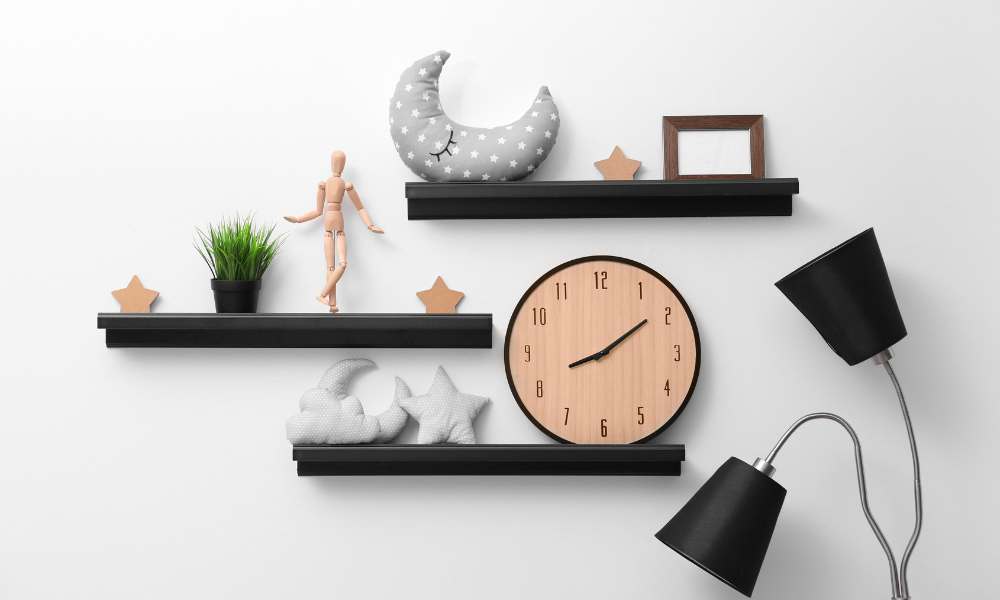Wondering how to hang a wall clock without drilling? Whether you’re a renter looking to avoid damage or simply seeking a cleaner approach, our guide offers innovative solutions that promise both ease and efficiency. Discover non-invasive methods that keep your walls intact while securely mounting your clock. From adhesive hooks and strips to suction cups and hanging strips designed for heavy items, we’ll walk you through a variety of options that cater to different wall types and clock weights. Dive into our article to explore practical tips that ensure your clock is not only an accurate timekeeper but also a damage-free addition to your décor.
Understanding the Basics

Hanging a wall clock without drilling is an essential skill for renters and those looking to preserve the integrity of their walls. Many living situations, such as apartments or historical homes, have strict rules against drilling, making non-invasive methods crucial for decor. Common wall surfaces include drywall, plaster, and brick, each with unique properties that affect hanging techniques. Drywall is relatively soft and susceptible to damage, plaster is more durable yet brittle, and brick is extremely sturdy but challenging to adhere to without proper tools. Understanding these surfaces helps in selecting the appropriate method for hanging clocks securely without causing any permanent alterations or damage.
Tools and Materials Needed
When planning to hang a wall clock without drilling, having the right tools and materials is crucial for a secure and precise installation. Opt for adhesive hooks, double-sided tape, or suction cups based on the clock’s weight and wall type. Adhesive hooks are ideal for heavier clocks, while double-sided tape can suffice for lighter models. Suction cups work best on smooth, non-porous surfaces. Additionally, using a level ensures that your clock hangs perfectly straight, and a measuring tape will help position it precisely. Equipping yourself with these tools and materials not only simplifies the process but also prevents damage to your walls, making clock installation a breeze.
Choosing the Right Hanging Method

Choosing the right method to hang a wall clock without drilling is crucial for both the clock’s security and the wall’s integrity. Consider the clock’s weight and the wall’s material first; adhesive hooks can support lightweight clocks on smooth surfaces like painted walls or tiles, while heavier clocks may require a more robust solution like high-strength adhesive strips. For textured walls, suction cups might not be effective, necessitating the use of hanging strips designed for textured surfaces. Aesthetic considerations also play a role; ensure the method you choose is not only effective but also keeps your space looking clean and uncluttered. Each method offers a balance of practicality and visual appeal, making your clock a focal point without damaging your walls.
Using Adhesive Hooks

Hanging a wall clock without drilling is simple and effective using adhesive hooks. First, select a hook that can support the weight of your clock. Clean the wall area with isopropyl alcohol to ensure it’s free of dust and grease, which enhances adhesion. Next, remove the protective backing from the adhesive pad and press the hook firmly against the wall for about 30 seconds. Wait an hour to allow the adhesive to fully bond before hanging your clock. To prevent wall damage, avoid repositioning the hook once placed. By following these steps, your wall clock will hang securely, maintaining both its function and your wall’s pristine condition.
Employing Double-Sided Tape
Hanging a wall clock without drilling is straightforward and effective using double-sided tape, especially for lighter models. To ensure a secure hold, select a high-quality mounting tape designed for your specific wall surface—whether it’s smooth like painted walls or slightly textured like wallpaper. Clean both the wall area and the back of the clock thoroughly to remove any dust or oil residues. Apply the tape to the clock, press firmly for a few seconds, then position it on the wall. Hold it in place for about 30 seconds to ensure strong adhesion. This method not only preserves your walls from damage but also allows for easy repositioning or removal.
Opting for Suction Cups
Opting for suction cups can be a clever solution for hanging wall clocks without drilling, especially on smooth surfaces like glass or tiles. To use suction cups effectively, ensure the surface is clean and dry before application. Press the suction cup firmly against the surface to remove any air pockets, securing a strong hold. However, be aware of the limitations: suction cups may not adhere well to textured walls or porous surfaces, and they typically hold lighter clocks better. For heavier clocks, consider reinforcing the hold with additional suction cups or exploring alternative methods to ensure a stable and secure setup.
Setting Up a Hanging Strip

Hanging a wall clock without drilling is straightforward with the use of removable hanging strips, especially designed for heavier items. Start by selecting a strip that can support the weight of your clock. Clean the wall surface and the back of the clock thoroughly to ensure the strip adheres properly. Place the strip on the clock as directed, usually along the top edge for balance. Press the clock against the wall, holding it firmly for about 30 seconds to secure the bond. For long-term stability, avoid placing the clock in humid areas and check the adhesive periodically to ensure it remains tight. This method ensures a clean, damage-free setup with reliable hold.
Maintenance and Adjustments
Maintaining the stability of your wall clock, especially when mounted without drilling, is crucial for its longevity and performance. Periodically check the adhesion of the hanging method used, whether it’s adhesive hooks, double-sided tape, or suction cups, to ensure they haven’t loosened over time. If the clock starts to sag or becomes unstable, carefully reposition it without pulling directly on the clock to avoid damaging the wall or the clock’s mechanism. For adjustments, gently remove and reapply the adhesive or update the placement using the same or a stronger hanging method. Regular monitoring and cautious adjustments will keep your clock secure and your walls pristine.
Final Thought
In conclusion, learning “How to Hang a Wall Clock Without Drilling” provides a perfect solution for those who want to enhance their space without permanent alterations. With the methods discussed, such as adhesive hooks, double-sided tape, and suction cups, you can easily install your clock while preserving your wall’s integrity. Whether you’re renting or just prefer a non-invasive approach, these techniques offer both security and simplicity. Regular maintenance checks and careful adjustments ensure your clock remains a reliable and stylish fixture in your home. Embrace these hassle-free methods and enjoy the freedom to decorate your walls without the worry of damage.

